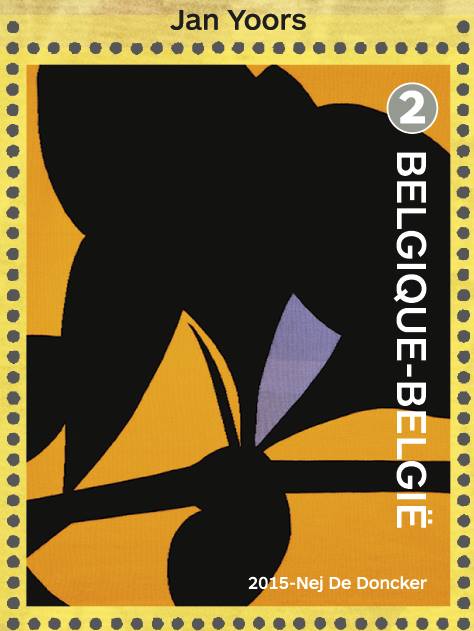From November 9 through December 16 2000, Icon20, the outstanding website and gallery for 20th century decorative arts, presented an exhibition of tapestries from the 1970s by Jan Yoors. The tapestries were on view at Icon20’s 5,000 square foot New York gallery. These monumental works of art, some measuring 24 feet in width and 12 feet in height, are spectacularly bold in their image and their execution. The broad planes and fragmented pieces of color in these woven paintings suggest, through abstract imagery, a world that is turbulent and serene at the same time.
Yoors, who died in 1977, was equally adept as both a fine artist and a craftsman. Although he was not very involved with the crafts scene some in the art world regarded him as “merely” a craftsman. A number of significant figures in the art world did not make such petty distinctions, however. The well-known critic Robert Hughes was a champion of Yoors’ work, as was the distinguished art historian E.C. Goossen, who described Yoors as “a master of what is often considered a lost art.” Goossen further stated of Yoors’ oeuvre that “with his tapestries he made an artistic statement that thoroughly confutes the idea that such a great form of expression can ever die out--the art of tapestry has never had a more clearcut affirmation.”
Yoors tapestries were also highly regarded by modernist architects such as Gordon Bunshaft, who required large-scale and vibrant works of art for their monumental public spaces.
While Yoors painted studies and the cartoons (the full-scale guide for the waevers) the weaving itself was executed by his two wives Annabert Yoors and Marianne Yoors, with whom he lived and worked simultaneously. The family (Yoors had children with both women), their Greenwich Village home and atelier and the art they created were unconventional, certainly, but are evidence of an intense and devoted collaborative effort, undoubtedly.
Yoors’ unusual arrangement of living and artistic creation expanded the mystique that was also associated with his name outside the art and design world. Outside his work as artist in New York Yoors was known to an entirely different audience for his work as a photographer of gypsy life in Europe in the immediate post-war period. While a teenager Yoors ran away from his family’s home in Belgium (his father was a stained glass artist), to live with a band of gypsies, with whom he traveled for a number of years. As an honorary gypsy Yoors photographed the Roma world. His photographs were published in 1965 in The Gypsies, a book that is regarded as the definitive document of Roma life.
In 1950 Yoors emigrated to the US and embarked on his new journey with tapestry. His work of the 1950s and early 1960s was informed by his humanistic approach and was primarily figural and narrative. His renderings of the human form became progressively abstracted and flattened and by the 1970s his tapestries were completely abstract, composed of interacting, fragmented color passages. In 2015 one of the tapestries in the exhibition was depicted on a Belgian postge stamp.








